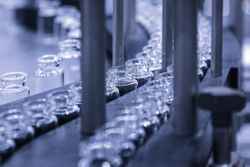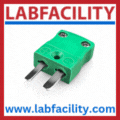
Posted to News on 31st Mar 2018, 14:46
Precision control for CIP processes
Clean-in-place (CIP) has been used for maintaining the cleanliness of process equipment in the pharmaceutical and food & beverage industries for over 50 years. However, specifying the most appropriate valves and sensors to control a CIP process can make a huge difference in terms of how effective and efficient the system is, which in-turn has a significant impact on operating costs.

Here are some of Brkert top-ten tips for optimising your CIP process:
1. From first principles; keeping the time devoted to the CIP process to a minimum reduces downtime and maintains productivity levels. In larger installations, it may be possible to isolate certain production lines for cleaning, while the others continue in operation.
2. The CIP process can involve a range of chemicals that are used to clean and disinfect the equipment. The concentration of these chemicals is very important in achieving an effective cleaning cycle without wasting expensive materials. To achieve the correct balance, it is important to specify the most appropriate control valves for each application, particularly when looking at precision dosing systems for detergent.
3. This process needs to take into account all of the influencing factors, such as temperature, pressure and chemical properties. CIP processes use either caustic or acidic detergent regimes, so the chemical resistance properties of the control valves within the manufacturing process are a very important aspect of the design.
4. The actual cleaning process itself may be initiated and stopped manually as and when it is required. This can lead to both ineffective and costly processes that could be improved with the use of automation. Installing a series of control valves and condition sensors that are linked to the main process controller, can significantly reduce the cost of CIP and improve its effectiveness.
5. By looking at the process in more detail it is possible to identify areas where improvements can be made. Examining the temperature and the conductivity of the cleaning fluid will determine if too much energy or too much chemical is being used. Any reductions in energy consumption or raw materials will have a beneficial effect on operational costs, so precise temperature measurement and a fast feed-back loop are essential.
6. Further savings can be derived from reducing water consumption in the rinse cycles. Rather than using a time-based process, which often uses more water than necessary, conductivity sensors can be used to establish when a clear water stream is established and close the control valve.
7. For the actual sterilisation process, sensors for pH, temperature and chemical concentration will be able to record data that may be required to meet statutory regulations, so some form of supervisory controller whether that be localised or networked is essential.
8. Smart valves and dedicated process controllers are a good option here as they provide the flexibility to store and display information locally, or pass it on to wider factory automation layers and MES systems. At the same time, this data ensures the process is accurately controlled and maintained for the most efficient result.
9. Having considered the control of the CIP process, further improvements can often be made to the control valves associated with the manufacturing process itself. By minimising dead flow areas and optimising the surface finish inside the valves, the efficacy of the cleaning process can also be improved.
10. At the same time, care should be taken when selecting control valve designs, especially in relation to the chemical resistance of the seals. The composition of the cleaning process and the chemicals used in it will determine the materials that should be specified for the sealing elements of the control valves.
Take advantage of an existing knowledge base
Using a combination of detergents, water and heat, the process offers a very efficient method of cleaning vessels and pipework without dismantling it. However, there is rarely a "one-size-fits-all' approach to fluid control applications, especially when excellent hygiene standards need to be maintained. In these situations, the best advice is to work closely with experts and manufacturers that can provide useful insights to the finer points of system design.
As a leading designer and manufacturer of process control valves, Brkert Fluid Control Systems has extensive experience in creating tailored systems that meet a wide range of CIP specifications and deliver reliable service. In many cases, taking a modular approach to building the control system is often the most cost-effective. In this respect, Brkert has an extensive range of products including valves, sensors and process controllers that can be integrated to deliver the most effective control of the installation.
Go to www.burkert.co.uk for further information.
Fluid Control Centre
1 Bridge End
GL7 1QY
UNITED KINGDOM
+44 (0)1285 648720






